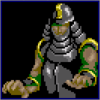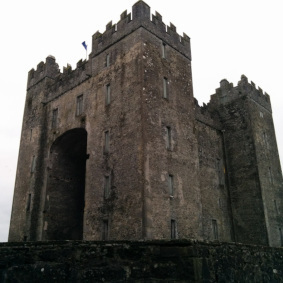https://www.alcazardesegovia.com/
https://www.openstreetmap.org/relation/6708094 Street view: https://goo.gl/maps/NvH3Jcj7cFCA5rv47
Visitation info is on their website, but it’s only in Spanish.
The Alcázar of Segovia, like many fortifications in Spain, started off as a Roman castrum, but apart from the foundations, little of the original structure remains. The alcázar was built by the Berber Almoravid dynasty. Almoravid art and architecture is scarcely talked about in scholarship in part because so little of the physical work has survived in Spain. Furthermore, the Almoravid dynasty was short-lived and therefore much of the art and architecture of that period was subsequently destroyed or converted by their successors.
The first reference to this castle was in 1120, around 32 years after the city of Segovia was conquered by the Christians (during the Reconquista when King Alfonso VI reconquered lands to the south of the Duero river, down to Toledo and beyond). In 1258, during the reign of King Alfonso X of Castile (r. 1252–1284), an intense thunderstorm caused a fire that destroyed several rooms, leading to centuries-long reconstruction during the reigns of various kings.
It is not known what the shape and form of the Alcázar was before the reign of King Alfonso VIII (1155–1214), however early documentation mentioned a wooden stockade fence. It can be concluded that prior to Alfonso VIII’s reign, the Muslim era structure was no more than a wooden fort built over the old Roman foundations. Alfonso VIII and his wife, Eleanor of England (sister of Richard the Lionheart), made this alcázar their principal residence and much work was carried out to erect the beginnings of the stone fortification we see today.
The Alcázar of Segovia was one of the favorite royal residences starting in the 13th century that in turn, led to secular patronage to the city of Segovia. It was during this period that most of the current building was constructed by the House of Trastámara.
In 1258, parts of the Alcázar had to be rebuilt by King Alfonso X after a cave-in and the Hall of Kings was built to house Parliament soon after. However, the single largest contributor to the continuing construction of the Alcázar was King John II of Castile who built the “New Tower” (John II tower as it is known today).
In 1474, the Alcázar played a major role in the rise of Queen Isabella I. On 12 December news of King Henry IV’s death in Madrid reached Segovia and Isabella immediately took refuge within the walls of the Alcázar where she received the support of Andres Cabrera and Segovia’s council. She was enthroned the next day as Queen of Castile and León.
The next major renovation at the Alcázar was conducted by King Philip II after his marriage to Anna of Austria. He added the sharp slate spires to reflect the castles of central Europe. In 1587, architect Francisco de Morar completed the main garden and the School of Honor areas of the castle.

